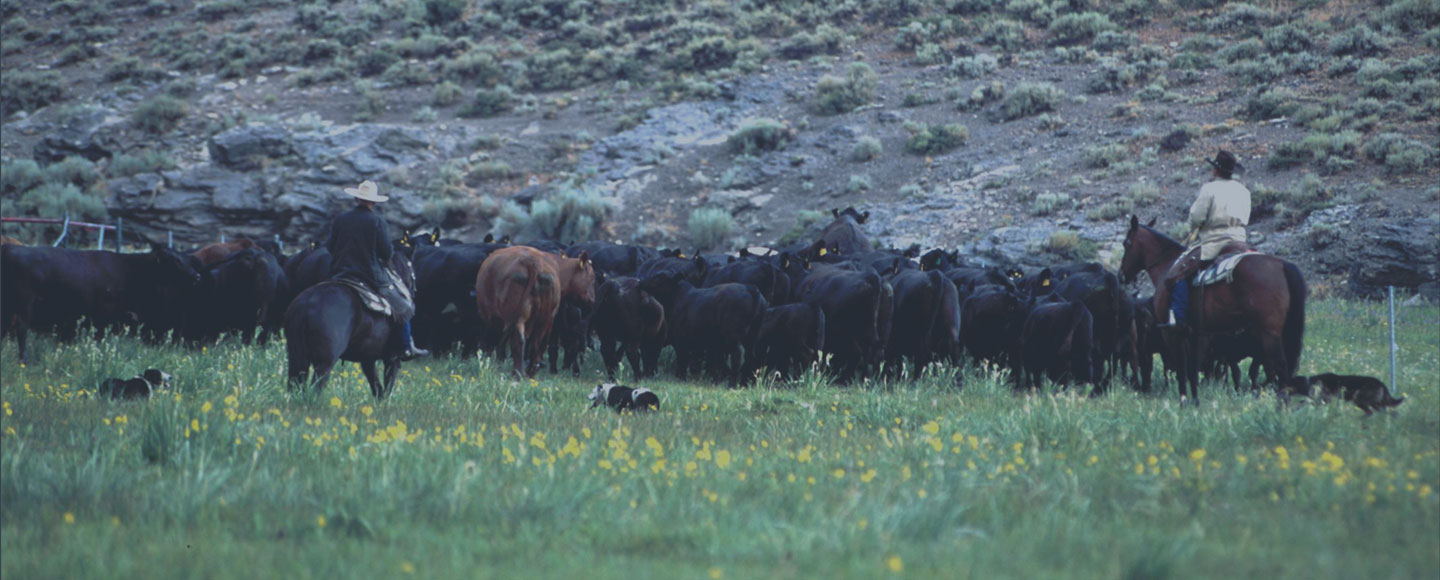Meet Some of California's Ranch Families & Beef Producers
Did you know that California ranks #4 in the nation for cattle & calves and #1 for dairy production? Behind those numbers are a variety of stories about families that have been doing this work for generations. Here are just a few!
Dot Seven Ranch
The Behlen Family
Clovis, California
There are two things that matter most to Betsy Behlen: her family and the Dot Seven Ranch. Betsy grew up in Clovis, California on a small dairy, and became the third generation to run the Dot Seven. First established in the 1930s by her aunt and uncle Lois and Fred Hazelton, Betsy's family often helped with the day-to-day operation of the ranch. Betsy's father, Jay Robinson, and her uncle had a deep respect and commitment to one another, the land and the cattle--a respect that ultimately led to Betsy's father purchasing the ranch in the late 1960s, becoming what is now the Dot Seven Ranch. Today, everything on the Dot Seven is a family affair. Betsy's daughter Brooke and son Brett are heavily involved in the ranch operations, with Brooke helping spearhead and launch a direct-to-consumer beef operation in 2019. Things have changed over the years, but Behlen and her family maintain one important tradition that started decades ago: respect and commitment to one another, the land and the cattle.
Vander Eyk Dairy
Pixley, California
For the Vander Eyk family, the primary business goals from day one have been to deliver safe milk to their consumers, provide a comfortable environment for their cows, and to be environmentally sustainable. Robert (Bob) and his wife, Arlene, started in the dairy business in 1982 with 400 cows in Southern California. In 2005, the Vander Eyks relocated to their present site in Pixley, where they currently milk 2,500 cows and care for 2,500 replacement stock. Helping alongside their parents are two of Bob and Arlene's sons, who help continue the commitment to care and quality that have always been a top priority at Vander Eyk Dairy.
A Long History of Collaboration
Imperial Valley Cattle Feeders
Brawley, California
Brandt Cattle Co.
El Toro Land & Cattle
Foster Feed Yard
Mesquite Cattle Feeders
Moiola Cattle Feeders
Phillips Cattle Co.
Superior Cattle Feeders
California's Imperial Valley boasts a rich and unique agricultural history. Located just north of the Mexican border in Southern California, the Imperial Valley has a year-round temperate climate with 1 1/2 inches of annual rainfall that makes it ideal for both raising cattle and growing feedstuffs. With cattle feedyards dating back to the 1930s, cattle feeders in the valley today have long collaborated for the greater good. These operations form a tight-knit community that shares a mutual commitment to a quality product. To each of them, excellent animal care and quality beef coming from the Imperial Valley--not just individual operations--are the ultimate goals.
